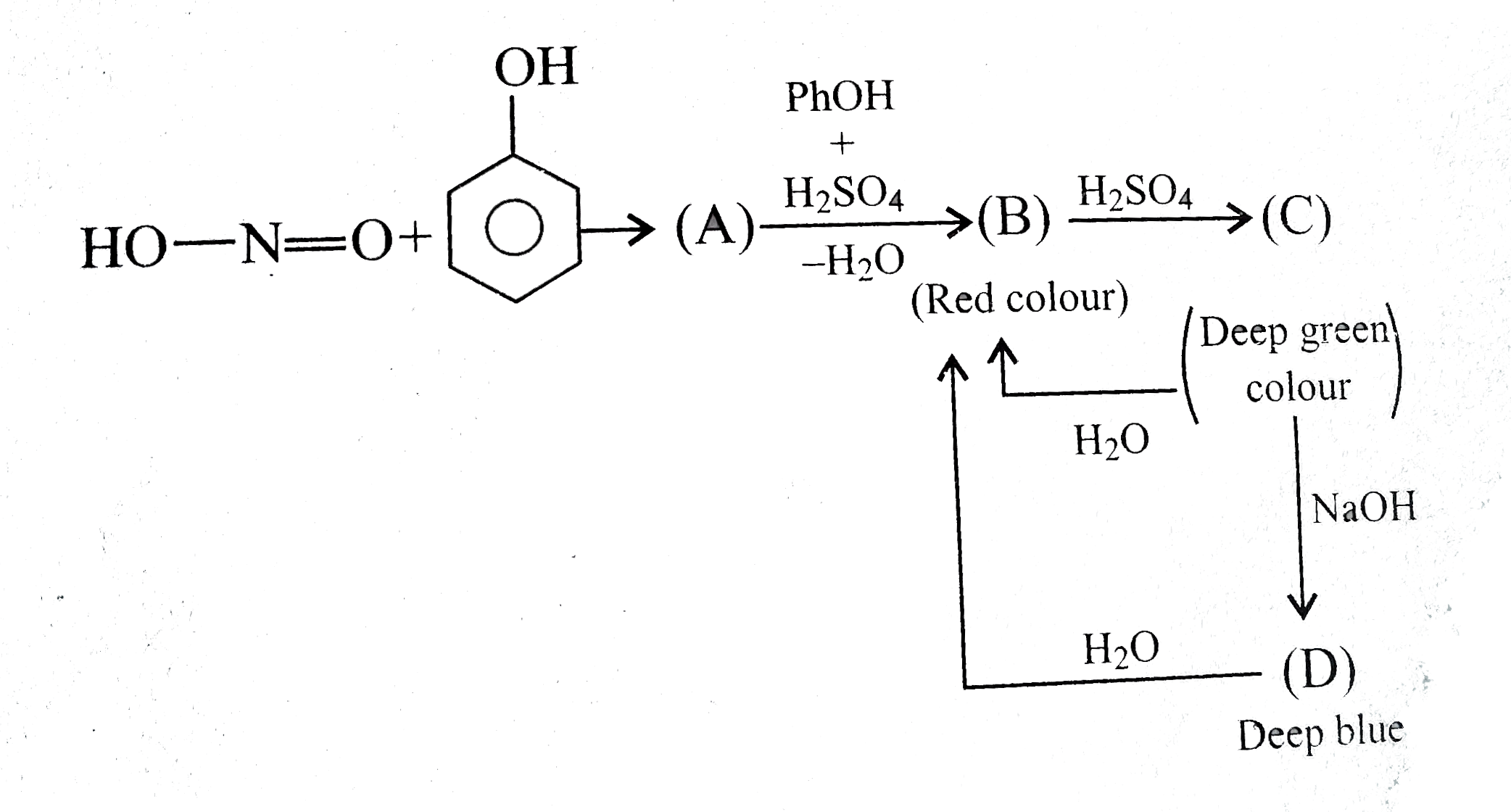STATEMENT-1: KMnO4 is coloured due to d-d transition .
STATEMENT-2: Colour due to d-d transition will be less intense .
STATEMENT-3: Fe[Fe(CN)6] will retain a brown coloured complex after a long time of its formation .
TFT
FTF
TTT
TFF
The correct Answer is:2
To analyze the statements provided in the question, we will evaluate each statement one by one, determining their validity based on our understanding of transition metal chemistry, particularly focusing on d-d transitions and the properties of the complexes mentioned.
1. Identify the central metal ion: In KMnO4, the central metal ion is manganese (Mn).
2. Determine the oxidation state of manganese: In KMnO4, manganese is in the +7 oxidation state.
3. Check for d-electrons: Transition metals exhibit color due to d-d transitions, which occur when there are d-electrons available for excitation. However, Mn in the +7 oxidation state has no d-electrons (it has an electron configuration of (Ar) 3d^0).
4. Conclusion: Since there are no d-electrons, d-d transitions cannot occur, making this statement false.
Statement 2: Color due to d-d transition will be less intense.
1. Understanding d-d transitions: d-d transitions are typically less intense compared to charge transfer transitions (like metal-to-ligand or ligand-to-metal charge transfers).
2. Reasoning: The intensity of color in transition metal complexes is influenced by the nature of the electronic transitions. d-d transitions are generally weaker and therefore less intense than charge transfer transitions.
3. Conclusion: This statement is true.
Statement 3: Fe(Fe(CN)6) will retain a brown colored complex after a long time of its formation.
1. Identify the complex: Fe(Fe(CN)6) refers to a complex where iron is coordinated to cyanide ligands.
2. Color change over time: Initially, this complex may appear brown, but over time, it can undergo a change due to oxidation states or ligand exchange, leading to a different color (often blue).
3. Magnetic properties: The complex can also change from a diamagnetic state to a paramagnetic state, which is often associated with a color change.
4. Conclusion: Therefore, this statement is false as the complex does not retain its initial brown color.
Final Evaluation of Statements:
- Statement 1: False
- Statement 2: True
- Statement 3: False
Overall Conclusion:
The correct answer is that only Statement 2 is true.
---
2. Determine the oxidation state of manganese: In KMnO4, manganese is in the +7 oxidation state.
3. Check for d-electrons: Transition metals exhibit color due to d-d transitions, which occur when there are d-electrons available for excitation. However, Mn in the +7 oxidation state has no d-electrons (it has an electron configuration of (Ar) 3d^0).
4. Conclusion: Since there are no d-electrons, d-d transitions cannot occur, making this statement false.
2. Reasoning: The intensity of color in transition metal complexes is influenced by the nature of the electronic transitions. d-d transitions are generally weaker and therefore less intense than charge transfer transitions.
3. Conclusion: This statement is true.
2. Color change over time: Initially, this complex may appear brown, but over time, it can undergo a change due to oxidation states or ligand exchange, leading to a different color (often blue).
3. Magnetic properties: The complex can also change from a diamagnetic state to a paramagnetic state, which is often associated with a color change.
4. Conclusion: Therefore, this statement is false as the complex does not retain its initial brown color.
- Statement 1: False
- Statement 2: True
- Statement 3: False
The correct answer is that only Statement 2 is true.
Topper's Solved these Questions
- THE D AND F-BLOCK ELEMENTS BOOK - AAKASH INSTITUTECHAPTER - THE D AND F-BLOCK ELEMENTS EXERCISE - Assingment ( Section-I Subjective Type Questions )
7 Videos
- THE D AND F-BLOCK ELEMENTS BOOK - AAKASH INSTITUTECHAPTER - THE D AND F-BLOCK ELEMENTS EXERCISE - Assingment ( Section-J Aakash Challengers Questions )
10 Videos
- THE D AND F-BLOCK ELEMENTS BOOK - AAKASH INSTITUTECHAPTER - THE D AND F-BLOCK ELEMENTS EXERCISE - Assingment ( Section-G Integer Answer Type Questions )
5 Videos
- Test-12BOOK - AAKASH INSTITUTECHAPTER - Test-12EXERCISE - Exercise
30 Videos
- THE P-BLOCK ELEMENTSBOOK - AAKASH INSTITUTECHAPTER - THE P-BLOCK ELEMENTSEXERCISE - Assignment Section-J)
16 Videos
Similar Questions
Knowledge Check
Which is coloured because of d-d transition ?
AKMnO4BK2CrO4CCoCl3DAll of theseSTATEMENT-1: VO−34 is coloured due to charge transfer .
STATEMENT-2: Colour due to charge transfer is highly intense colour
STATEMENT-3: Fe may form Fe-Fe bondAFTFBFTTCTTFDTTTK4[Fe(CN)6] is slightly yellow coloured due to :
Acharge transferBmore polarization planeCunpaired electronsDnone of these
STATEMENT-1: KMnO4, is purple in colour due to charge transfer. and STATEMENT-2: In Mno, there is no electron present in d-orbitals of manganese.
View SolutionThere is no d−d transition in Cu+ but Cu2O is coloured due to
View Solution
The deep blue colour of compound (D) is due to the formation of:
View SolutionSTATEMENT-1 : MnO−4 is tetrahedral in shape .
and
STATEMENT-2: KMnO4 is purple in colour .
View SolutionIn which of the following ions, the colour is not due to d-d transition?
View Solution
